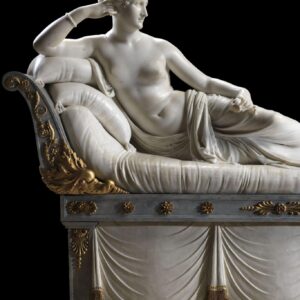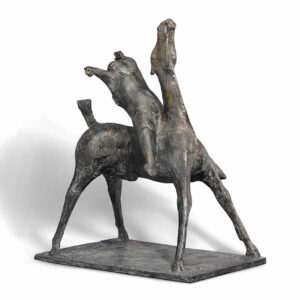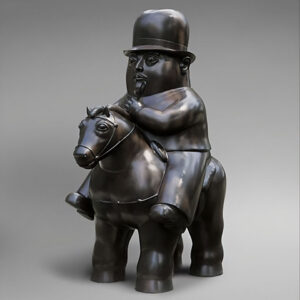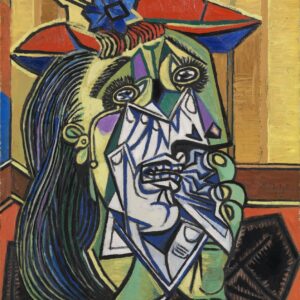Allen Jones RA (born 1 September 1937) is a British pop artist best known for his paintings, sculptures, and lithography. He was awarded the Prix des Jeunes Artistes at the 1963 Paris Biennale. He is a Senior Academician at the Royal Academy of Arts. In 2017 he returned to his home town to receive the award Honorary Doctor of Arts from Southampton Solent University
Jones has taught at the Hochschule für bildende Künste Hamburg, the University of South Florida, the University of California, the Banff Center School of Fine Arts in Canada, and the Berlin University of the Arts. His works reside in a number of collections; including the Tate, the Museum Ludwig, the Warwick Arts Centre and the Hirshhorn Museum.[1] His best known work Hatstand, Table and Chair, involving fibreglass “fetish” mannequins, debuted to protests in 1970.
Jones continued his artistic activity into the 2000s, and among other projects he incorporated leatherwork by Whitaker Malem.[20] In recent years, Jones has increasingly become known for his large steel sculptures, many of which are abstract in nature and feature intertwining figures. A number of them were displayed in an outdoor exhibit in May 2015 at the Art in the Park event held by Lake Zurich.[21] His work is also included in a number of public and private art collections; three of his paintings are in the collection of the Centro de Arte Moderna of the Gulbenkian Foundation in Lisbon,[22] and he has pieces in the Ingram Collection of Modern British Art.[23]
In 2007, he was awarded an honorary Doctorate of Arts from Southampton Solent University.[18] He has had solo exhibitions at the Wetterling Teo Gallery in Stockholm and the Serge Sorokko Gallery. His works featured in the Pop Art Portraits show at the National Portrait Gallery in London, and had a dedicated room of watercolours, drawing and paintings at the Tate Britain. In 2008, he was given a dedicated watercolour room at the Royal Academy of Arts. In April 2013, his work was included in a major exhibition at the National Museum of Wales in Cardiff, titled Pop and Abstract, alongside work by artists like Peter Blake and Bridget Riley.[24] A parody of Jones Chair sculpture was part of a collection exhibited under the name Allen Jones Remake at the Venus Over Manhattan Gallery in New York in 2013.[25] An example of Jones’ 1969 Chair sculpture (as well as over fifty other works) remains at the Tate, which was acquired in 2014.[4][13] In November 2014, a retrospective on Jones opened at the Royal Academy of Arts, running until January 2015 in London.[26][27]
Artistic style and influences[edit]
Associated with the British Pop art movement of the late 1960s,[5] Jones is known for his work with lithography, painting, drawing, and sculpture. The Cass Sculpture Foundation wrote about Jones’ work that “on a flat canvas, painted forms appear sculptural and his three-dimensional works are painterly. He uses colour to describe form, at times with graphic precision, or conversely with an energy and freedom of gesture which is close to direct expression. Similar developments are evident in his printmaking.”[7] The Tate has described his output in lithography as “prolific,” writing that it “proved an appropriate medium for his graphic flair.”[4] Artists and pop fashion designers such as Alexander McQueen, Issey Miyake and Richard Nicoll have cited Jones as an influence on their own styles.[26]
Jones is known for incorporating erotic imagery into his works, including rubber fetishism and BDSM, and this sexuality has often been a focus of both art critics and the press.[20] Mark Hudson wrote in 2014 that Jones’ “subjects have included musicians, dancers and London buses, but in the popular perception his name is irrevocably linked to his peerlessly kinky fetish women, whether in two or three dimensions, with their machined surfaces and blank expressions – images that are as emblematic of classic British pop art as Peter Blake‘s Beatles paintings or Hockney‘s swimming pools.”[2] In a review on Jones’ career, Richard Dorment wrote in November 2014 that “you could argue that Jones’s work isn’t really about women; it’s about men and how they look at and think about women. Men use various strategies to neutralise or control desire. One is to fetishise the female body…[while] another is for the man to appropriate it.”[28]
Dorment further explains himself by writing that
turn to Jones’s paintings, and you see that he explores the theme of men transformed into women again and again. A man dancing with a woman becomes inextricably fused into her body; another trades trousers and brogues for stockings and heels, as he walks from one edge of the canvas to the other…
Dorment further opines that “the paintings… show men and women in sexual situations, but they are joyous and liberated and self-indulgent in a way that the lugubrious mannequins aren’t.”[28] Wrote Catrin Davies for Twin Factory in November 2014 about the show,
Jones’ paintings provide a little counterbalance to the implied misogyny of his sculptures. In these colourfully kitsch scenes he paints about power-play with cross-dressing inferences, of the dominate female, the submissive male, of the animalistic rituals of mating and the delicate interplay of coupling represented in the form of dance.[27]

























